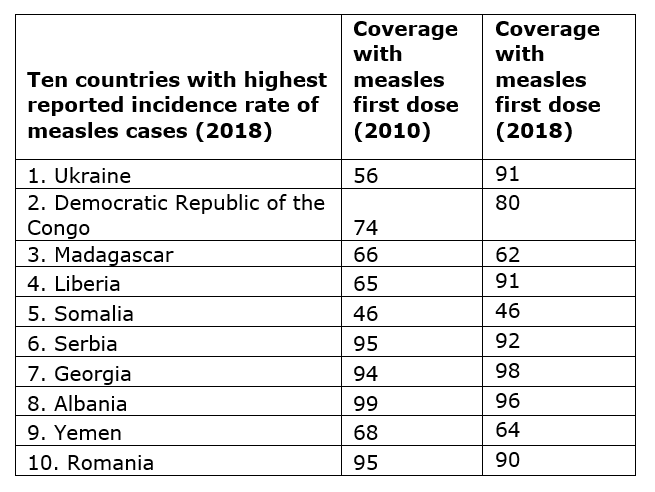1 in 10 children missed lifesaving vaccines in 2018
Click Here to Manage Email Alerts

More than one in 10 children worldwide did not receive lifesaving vaccines for measles, diphtheria and tetanus in 2018, according to new data from WHO and UNICEF.
“While most children today are being vaccinated, far too many are left behind,” WHO Director-General Tedros Adhanom Ghebreyesus, PhD, MSc, said in a press release. “Unacceptably, it’s often those who are most at risk — the poorest, the most marginalized, those touched by conflict or forced from their homes — who are persistently missed.”
Since 2010, vaccination coverage has stalled globally at approximately 86% for three doses of diphtheria, tetanus and pertussis and one dose of the measles vaccine. To avoid outbreaks of vaccine-preventable diseases, WHO stated that 95% coverage is needed across communities, countries and the globe.
About half of unvaccinated children live in poor countries affected by conflict, including Afghanistan, Chad, the Democratic Republic of the Congo, Haiti, Iraq and Yemen, among others. If children in countries with fragile living conditions get sick, they face severe health consequences and are the least likely to access treatment, according to WHO.
In the 10 countries with the highest reported incidence rates of measles cases in 2018, only two — Georgia and Albania — have achieved the recommended 95% coverage rate.

WHO announced that approximately 350,000 measles cases were reported globally in 2018, more than doubling from 2017.
“Measles is a real time indicator of where we have more work to do to fight preventable diseases,” UNICEF’s Executive Director Henrietta Fore said in the release.
“Because measles is so contagious, an outbreak points to communities that are missing out on vaccines due to access, costs or, in some places, complacency.”
Ukraine had the highest reported measles incidence rate after several years of low coverage, despite having reached a 91% first-dose vaccination coverage rate in 2018. This suggests that low coverage over time or “discrete communities of unvaccinated people” can drive deadly outbreaks, according to the release.
Additionally, only 13 lower income countries had introduced HPV vaccines into their national programs as of 2018 — meaning that those who are most vulnerable to cervical cancer are the least likely to receive the vaccine, WHO said. – by Joe Gramigna
Disclosures: Tedros and Fore report no relevant financial disclosures.

